When urgent news breaks or a major decision needs to be communicated, clarity and speed are non-negotiable. Many organisations struggle to deliver the right message to journalists without confusion or delay, especially when the stakes are high.
I've seen how a well-crafted press communique can make all the difference—cutting through noise and ensuring your message lands exactly as intended. But writing one isn't always straightforward. There are strict conventions, and missing a single detail can mean your news gets ignored.
In this guide, I'll walk you through every step of creating an effective press communique. You'll learn the difference between a communique and a press release, how to structure your message, what details to include, and which pitfalls to avoid. I'll also share templates, checklists, and expert tips for maximum impact.
By the end, you'll have a practical framework for writing clear, credible communiques that journalists trust and act on—no matter how urgent or sensitive the news.
What is a press communique and how to write a press communique?
Defining a press communique
Let’s start with the basics: a press communique is a brief, formal message shared with the media to deliver significant organisational news, clarify an official stance, or communicate urgent updates. It’s not meant for casual announcements; it’s reserved for moments when speed and accuracy matter most.
![How to write a press release? [Examples, Tips, Format and Templates]](https://cdn.prod.website-files.com/67209df463dce3fd8766a5ca/69013b9210f3292e24a3550e_maxresdefault.jpeg)
How to write a press release? [Examples, Tips, Format and Templates]
Clarity drives every communique. When there’s a crisis, a leadership change, or new regulations, journalists need details fast, with no room for confusion. Remember after the G7 summit in September 2024? Their communique gave the climate commitments, no fluff—just key outcomes for immediate reporting.
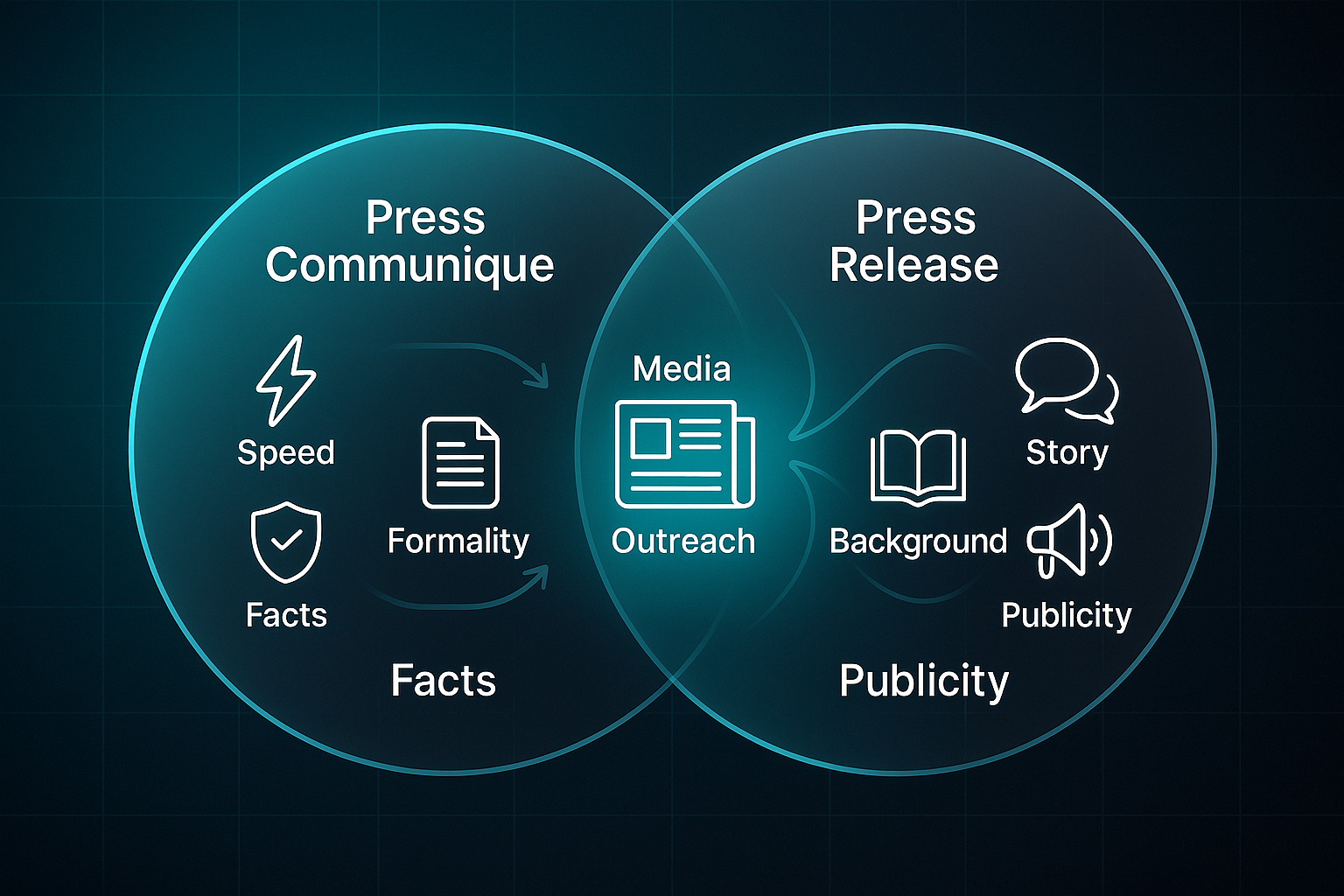
Press communique vs. press release
So, how is a communique different from a press release? They both reach journalists, but approach things differently.
A press communique keeps things short and focused, never crosses into marketing territory, and sticks strictly to the facts. A press release, though, provides background, stories, and aims to spark curiosity or wider coverage.
Take a look at this comparison:
| Aspect | Press Communique | Press Release |
|---|---|---|
| Purpose | Summarise official stances, urgent outcomes | Promote news, events, or products |
| Tone | Neutral, formal, factual | Engaging, may include brand messaging |
| Example | FAA grounds all 737 MAX aircraft with immediate effect for safety review. | Company X launches new product line with UK rollout this October. |
If you're dealing with a rapid regulatory decision, a communique is the way to go. For launches or detailed company narratives, a press release fits better.
Core elements of an effective press communique
So, what makes a strong communique?
- Headline
Clearly states the news with no embellishment. - Dateline
Shares date and location. - Lead paragraph
Lists who, what, when, where, and why. - Body
Gives supporting facts prioritised by importance. - Quote
Brief, formal comment from an authorised spokesperson, if relevant. - Boilerplate
Short organisational background. - Media contact
Details for journalist enquiries.
Extras like disclaimers or subheadings can offer context. Stick with neutral language and use the inverted pyramid: most important info comes first. That way, media can report it clearly—no ambiguity, no misinterpretation.

Define the purpose and audience
Clarify the reason for the communique
Deciding whether to use a press communique starts with one simple question: does your message need to be delivered with speed, clarity, and formality? Communiques work best for situations where there’s no time or space for ambiguity—crisis management, urgent regulatory changes, major leadership shifts, mergers, or sudden policy updates.
If you’re announcing a product launch or inviting people to an event, a traditional press release or a media advisory generally fits better. Here’s a real-world example: when the UK’s energy market changed in 2022, Ofgem put out a communique to clarify new rules—so journalists had the facts immediately.
A primary goal during sensitive situations is to control the narrative; a formal communique is the most effective tool for establishing the official story.
When it’s sensitive or time-critical, a communique’s neutral style helps avoid confusion, protecting your reputation.

Gather facts and supporting details
Collect verified information
Begin with the essentials: who, what, when, where, why, and how. For an April 2024 merger, clearly note the organisations, the type of agreement, date, location, reasoning, and process steps. Only use primary sources—like official statements, filings, interviews, or documented records.
Fact-check every detail by cross-referencing at least two independent, reliable sources. Work from a checklist including names, dates, precise context, timeline, and all parties impacted. Never include hearsay, incomplete reporting, or speculation—these risk your communique being ignored or retracted.

Select supporting statistics and evidence
Choose up-to-date statistics that really strengthen your main message, directly from trusted, authoritative bodies. Attribute each statistic and avoid outdated, vague, or anecdotal figures—skip pre-2021 studies if newer data exists.
Identify relevant sources and spokespersons
Pick directly-involved experts—CEOs, technical leads, official press contacts. Confirm they approve the quotes, want to be quoted, and can handle press queries.
Common pitfalls to avoid during fact gathering
Exclude rumours, unrelated or old data, and promotional language. Stick to neutral, independently verified facts for genuine credibility.
Craft a compelling headline
Essentials of an effective headline
A strong headline goes straight to the news—using fewer than 15 words and leading with the event, impact, location, or timing. Brevity and specificity help journalists judge relevance fast. Ditch branding and hype—focus on outcomes you can clearly support: “Company Z Implements Electric Fleet Across London by Q1 2025.”
Avoiding common headline pitfalls
Puns, jargon, or vague buzzwords (“ABC Corp’s Game Changer!”) muddy the message. Instead, anchor your headline with straightforward facts: “ABC Corp Launches Remote Work Platform for SMEs.” And keep things neutral—no exaggeration.
Journalists are often skeptical of overly hyped headlines and may view them as a sign of a non-newsworthy story. Stick to the facts and let the news speak for itself.
Sample headlines for inspiration
Need a template? Try Policy: “DEF Board Approves Equal Pay Policy – Effective June 2025.” Crisis: “GHI Firm Addresses Data Breach in UK Operations.” Results: “Survey: 63% of Patients Support New NHS Referral Process.”

Develop the body: structure and content
Expanding on the key facts
After crafting your headline and lead, add only the most relevant background—such as regulatory changes or a clear event trigger. Show how this news impacts those involved, sticking to neutral and precise language.
Integrating quotes for authority and neutrality
If a brief, on-record quote from a spokesperson adds real insight, include it. Attribute the name and role, and make sure the quote introduces a new angle rather than repeating points.

Prioritising information by importance
Apply the inverted pyramid: highlight what matters most first, with supporting details below. Reporters need to grab core news instantly.
Avoiding common writing pitfalls in the body
Skip marketing jargon and unclear phrasing. Address any ambiguity directly so every point stands out with clarity and accuracy.
Add supporting details and context
Briefly expand on the headline
Reinforce your headline with one or two concrete facts. Use real numbers—such as “£17 million in new funding” or “affecting 3,200 employees.” Always name organisations, for example: “NHS England and two private healthcare groups.” If it adds value, a short quote—“This action secures vital services”—can boost authority.
Avoiding unnecessary elaboration
Only include facts that directly clarify the announcement. Skip background stories, company history or unrelated achievements. Each detail should make the news sharper, not muddier.
Examples of effective supporting details
| Strong Detail | Weak/Vague Detail |
|---|---|
| ‘£25 million contract awarded to Acme Solutions, impacting 14 schools across Manchester starting September 2024.’ | ‘A contract will help several schools in the area.’ |
| ‘Statement issued by Transport Minister Jane Smith.’ | ‘A government spokesperson commented.’ |
| ‘Policy to be implemented from 3 July 2024.’ | ‘The policy will take effect soon.’ |
Specific supporting details help journalists get it right, fast.
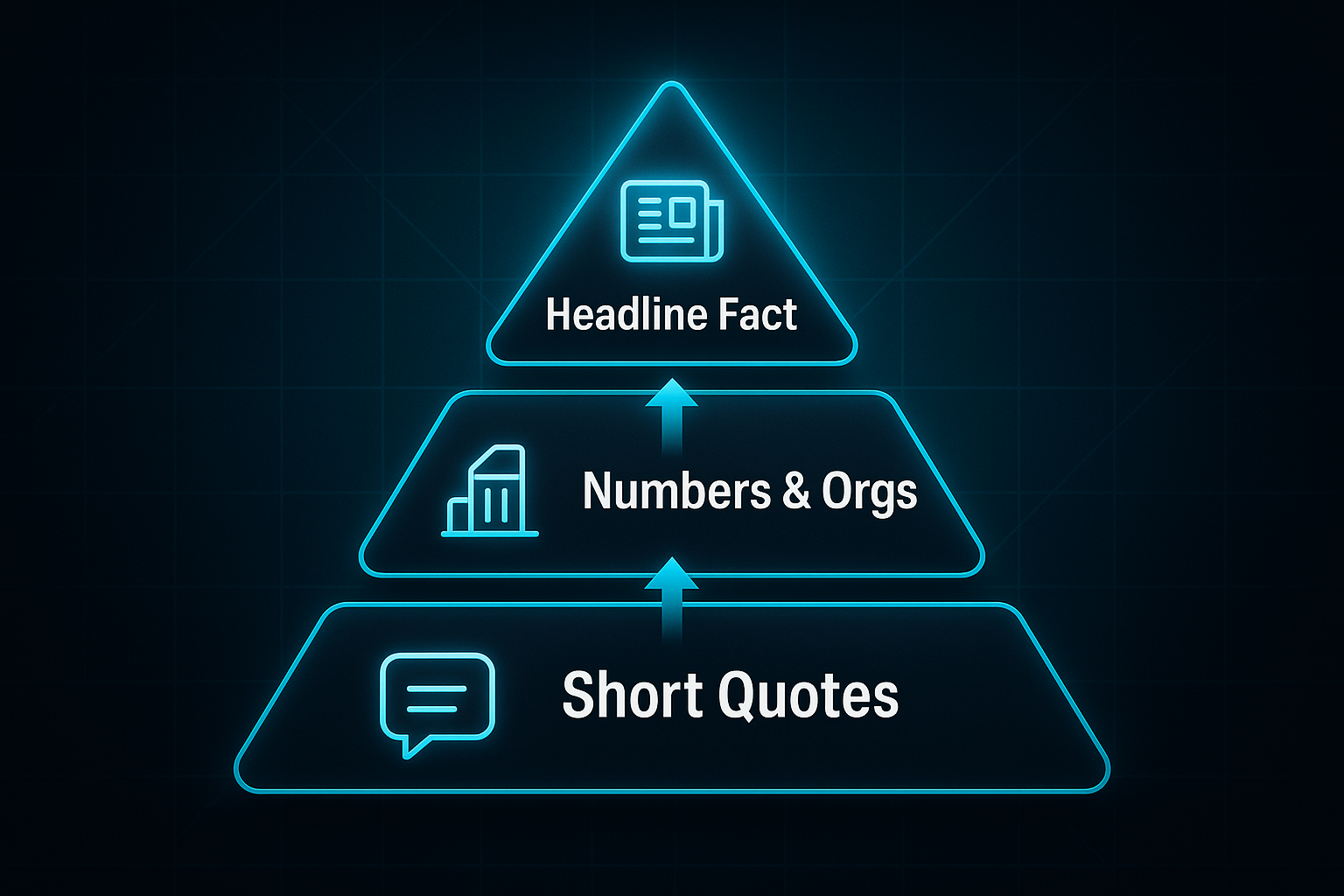
Add quotes and properly attribute them
Selecting the right spokespersons
Choose a spokesperson with real authority—CEOs for leadership crises, or technical leads for policy changes and technical updates. Bringing in an external expert can raise credibility—take the NHS England-EMA case, where both CEOs delivered focused quotes.

Quotations and Attributions Part 1
Make sure whoever you pick is comfortable with the spotlight and their facts are solid.
Whether it's a media interview, a podcast appearance, or a public speaking engagement, having a well-prepared spokesperson is crucial for delivering a compelling and consistent message.
Quote placement and function
Where does a quote go? At the top, it shows leadership; in the middle, it verifies expertise; at the end, it signals reassurance or forward steps.
Direct quotes offer a unique perspective, not just repetition.
Proper attribution techniques
Start with full name, job title, and organisation—“Sam Patel, Regulatory Head at GreenCorp”. Afterwards, just the surname and ‘said’ works.
Always quote approved, named individuals—never anonymous sources. One impactful quote is far better than a jumble of long statements.

Summarise and clarify next steps
Restate the core message and outcomes
Wrap up with one clear, factual sentence—something like, “2,000 homes will be connected by December 2024.” This keeps your message focused.
Direct journalists to next steps
Let journalists know exactly what to do next—request an interview, get further documents, or reach out for details. Always include contact details: name, phone, and email.
Effective closing practices
End with a contact line: “For more information, contact: Mark Li, HR Head, hr@org.org, 020 7123 4567.” The ‘###’ symbol just below signals the communique’s completion.
- Restate summary
Main outcome in a single line. - Next steps
Actions available. - Contact information
Name, phone, email. - ‘###’ symbol
Clearly marks the ending.
Example of a strong closing
“The policy takes effect 1 October 2024. For enquiries: Mark Li, HR Head, hr@org.org, 020 7123 4567. ###”
Add a concise boilerplate
Purpose and content of a boilerplate
A boilerplate finishes your communique, sharing key facts—name, founding year, location, and main purpose or services. Tailor it: highlight social impact for charities, key services for companies, or mandate for public bodies. It must stay brief, factual, and always skip hype. If your update is exceptionally urgent, you can omit it.
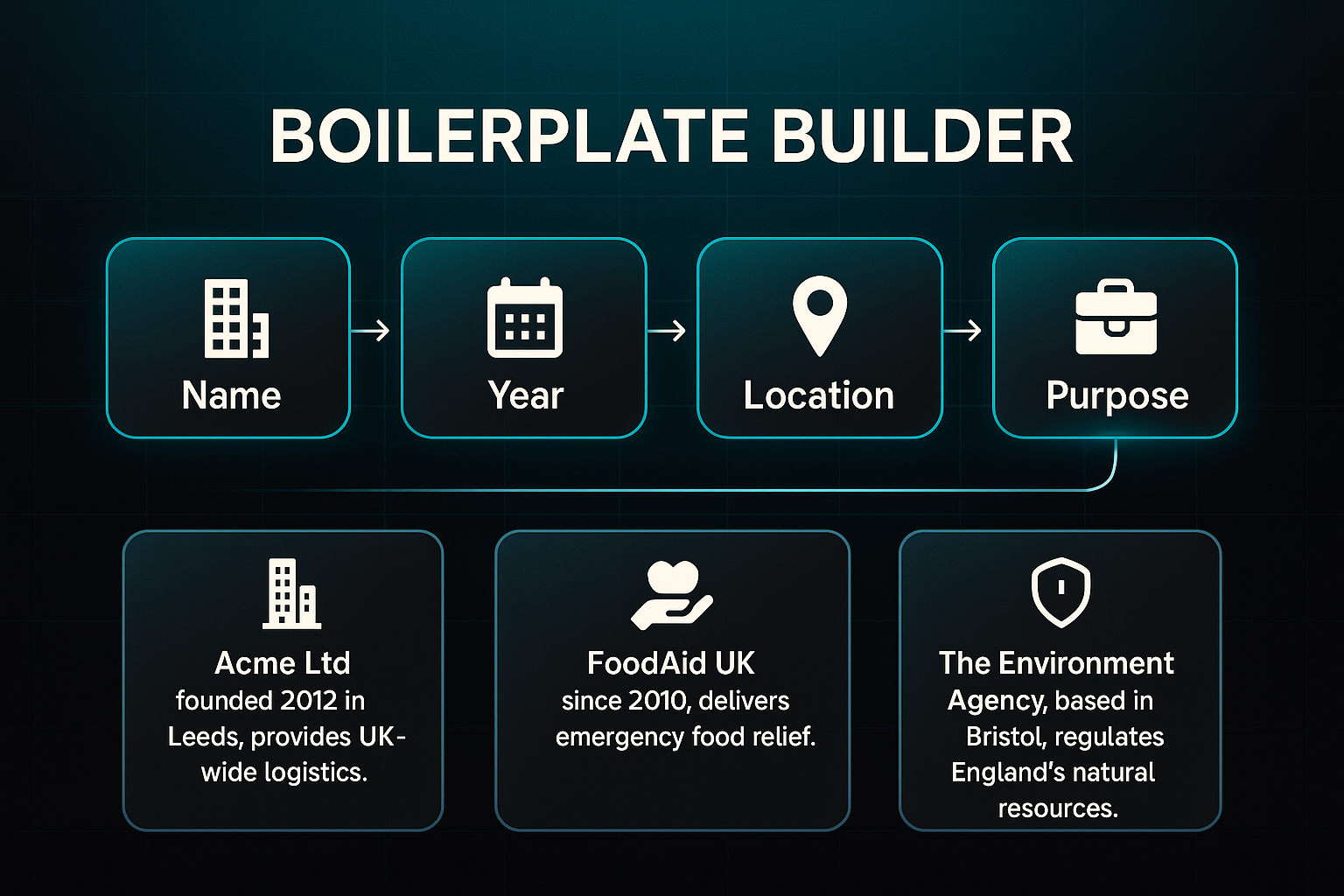
Boilerplate templates
Corporate: “Acme Ltd, founded 2012 in Leeds, provides UK-wide logistics.” Nonprofit: “FoodAid UK, since 2010, delivers emergency food relief.” Government: “The Environment Agency, based in Bristol, regulates England’s natural resources.”
Provide final details and contact information
Mandatory contact fields
Wrap up with a direct contact block featuring full name, title, organisation, direct email (not a generic one), and a specific phone number for the person handling media queries.
If your news is international, offer a local contact for every major region. Journalists appreciate genuine, fast access—it earns trust and increases the chance your story will be covered.
Date and dateline best practices
Open your communique with a dateline at the top, such as “LONDON, UK – 10 September 2024 –”.
Stick to globally recognised date formats and include time zones if required. This ensures clarity and avoids any reporting mix-ups.
Edit and review for professionalism
Proofreading essentials
Check spelling, grammar, names, and job titles. Read aloud to spot unclear phrases or awkward wording. Trim anything repetitive or unnecessary—clarity wins every time.
Final media readiness checks
Stay under 400 words and lead with key details. Cut buzzwords and vague lines. Check quotes—are they brief, attributed, and genuinely newsworthy?
Peer or expert review
Get a colleague or expert to review for errors, jargon, or outdated information. Prompt feedback speeds up your final tweaks.
Quick editing and review checklist
- Headline
Clear, factual - Lead
Core details - Facts
Verified - Tone
Neutral - Word count
Under 400 - Quotes
Newsworthy - Contact/boilerplate
Correct - Peer review
Complete
Templates and checklists for press communiques
Essential structure of a press communique
When it comes to writing a strong press communique, following best-practice structure will save you endless headaches—and make life much easier for journalists.

How to Write a Press Release Step-by-Step (FREE Templates)
Here’s the essential, up-to-date template:
- Release line
“FOR IMMEDIATE RELEASE” signals urgency. - Headline
Clear, factual summary in 15 words or fewer. - Subheadline (optional)
Adds extra detail if absolutely needed. - Dateline
City, Country – Date for context. - Lead paragraph
Answers who, what, when, where, why in two short sentences. - Body
Supporting detail only—no filler. - Quote
One strong, attributed quote adds real authority. - Boilerplate
Brief, factual statement about your organisation. - Contact details
Name, role, direct phone and email. - End marker
“###” or “-30-” closes things off.
Common mistakes to avoid
- Missing required fields
Skipping the dateline, contact info, or boilerplate leaves gaps. - Overly promotional tone
Stay factual, not salesy. - Weak or absent quotes
Always include a relevant, attributed quote. - Poor formatting
No lengthy, dense paragraphs.
Quick communique checklist
- Headline
Sharp and factual. - Dateline
In correct format. - Lead
All five Ws, under three sentences. - Body
Only verified facts. - Quote
Named and approved. - Boilerplate
Concise, no hype. - Contact
Complete details. - End marker
Clearly shown. - Proofread
Reviewed for errors.
Building templates and checklists into your process builds real professionalism—just like the top organisations do.

Best practices and expert tips for success
Timing and targeting recommendations
Timing can change everything. Send your communique on a Tuesday, Wednesday, or Thursday morning—between 8 and 10 AM—when journalists actually pay attention.
But it’s not just about timing. Focus on journalists who already cover your topic, not everyone. If there’s major breaking news, delay—or set an embargo for more complex updates.
Formatting for journalists’ needs
A single-column layout and a 12pt web-safe font help journalists process quickly. Keep it brief—always under 400 words—and organise with headers and sharp bullet points for clarity.
The ideal length of a press release is between 300 and 400 words. This is long enough to include all the necessary information, but short enough to be read quickly.
Wrap up with full contact details and a clear end marker like “###”.
Language and style enhancement
Start with the five Ws—who, what, when, where, why—in clear language. Always include a named quote and one strong, verified fact. For digital sharing, add keywords or a simple infographic to boost online reach.
Actionable best-practice checklist
- Send timing
Tue–Thu, 8–10 AM local time - Targeting
Journalists for your topic - Format
Single column, 12pt, ≤400 words, bullet points - Language
Clear, fact-based, named quote - Digital
Keywords and image/graphic - Closure
Contact info, end marker
Troubleshooting: If your communique was ignored
Finding your press communique has been ignored can be frustrating, but it’s actually a valuable chance to sharpen your approach. The way you respond—and what you change next—can make all the difference for future success.
Why do communiques get ignored?
- Weak headline
Fails to grab attention or communicate news value. - Insufficient news
Offers nothing fresh or relevant for journalists to write about. - Poor timing
Lands during busy news cycles or inconvenient off-hours. - Unfocused content
Tries to tackle too many ideas at once, losing clarity.
Simple fixes to turn things around
- Rewrite headline
Ensure it’s specific, clear, and moves the needle. - Retarget outreach
Reach the right journalists who naturally cover your area. - Sharpen news angle
Add the latest stats or a unique perspective. - Use owned channels
Share via your website and social media after press outreach. - Follow up strategically
Offer new angles or exclusives—don’t just resend the same message.
Learn from what went wrong
The CrowdStrike outage in 2024 showed how vague, slow statements create confusion—swift, clear updates matter. The Bumble backlash in 2023 proved that defensive, delayed replies just fan the flames.
Keep reviewing your results and adapting your process. Every failed communique is a springboard to better results next time.
Following up and measuring success
Best practices for effective follow-up
Personalise follow-ups by referencing a journalist’s beat and sharing something new—like fresh data or access to an executive.
Limit yourself to one follow-up, sent two or three days after your communique. Anything more risks damaging relationships or simply being ignored.
Big brands often use AI-powered PR tools to finesse their timing and tailor each follow-up, ensuring every message fits the recipient.
Key success metrics
So, how do you know if it’s working? Track media pickup rate, referral traffic, journalist responses, and the coverage’s sentiment.

Tools like Cision, Meltwater, and Google Analytics help you manage contacts, follow media pickups, and measure real-world impact.
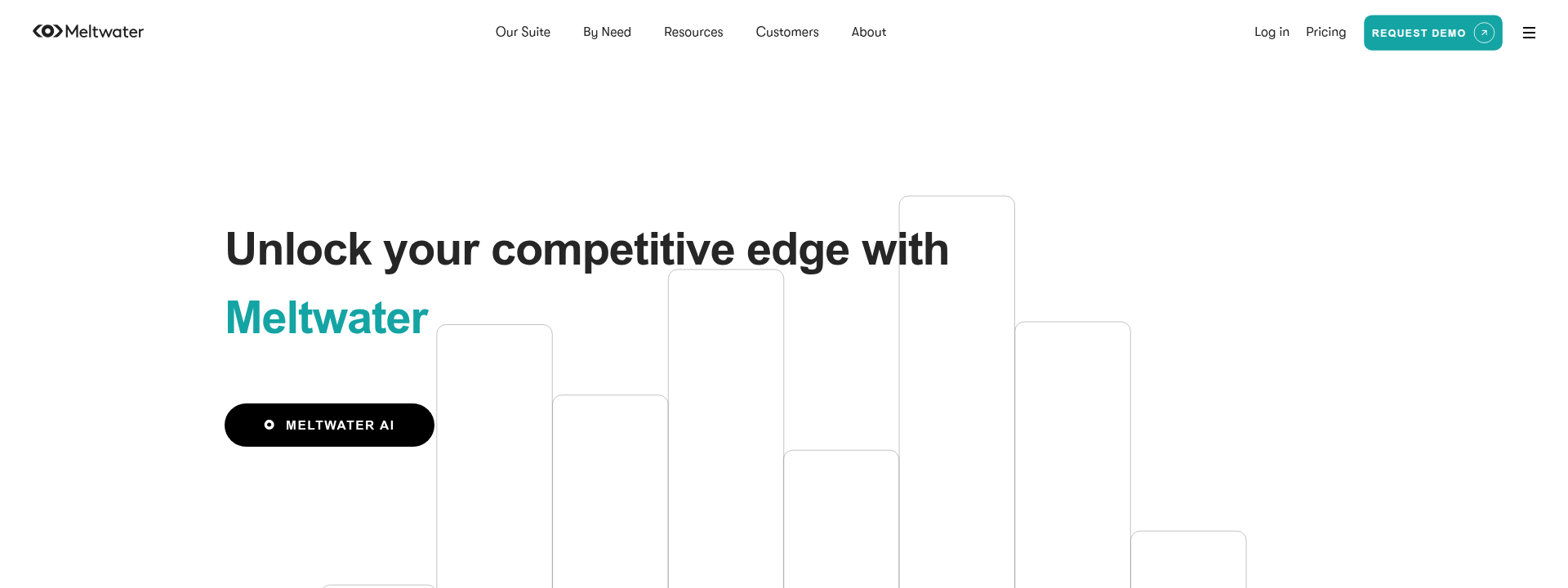
Source: meltwater.com
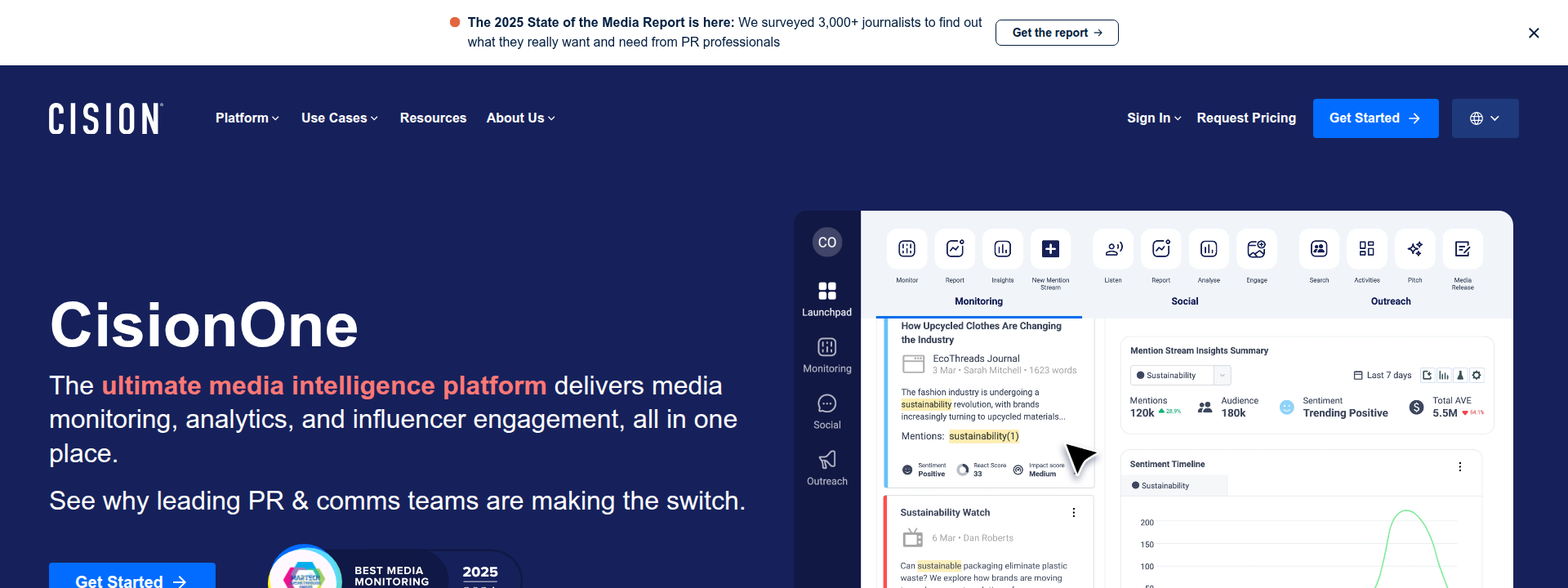
Source: cision.com
Iterating based on results
After each communique, review analytics with your team. Gather feedback, adjust your timing or message, and keep improving your outreach every time.
Blog-in-one-minute
Add a fully SEO-optimised blog to your website with just 2 lines of code.
Learn more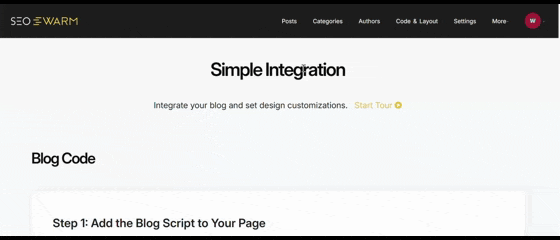
Press communique vs. other communication formats
Comparison to press releases
A press communique is formal and consensus-led—used for official updates after big meetings. The G7 2024 Apulia communique, for instance, was neutral and concise, agreed by every leader.
Press releases operate differently. They grab attention with detail and news value—think of Apple’s iPhone 15 launch full of features, prices, and executive quotes.
Comparison to internal memos
Internal memos are private, aimed only at staff. Starbucks’ January 2024 remote work memo was direct, sometimes conversational, and never meant for the press.
Decision guide for format selection
What’s the best fit? Go with a press communique for urgent news, press release for publicity, or internal memo for staff updates. Audience decides everything.
Modern tools and platforms for creating and publishing press communiques
The rise of AI-powered content optimisation
AI-driven platforms like SEOSwarm are transforming how press communiques are produced. Research, drafting, and SEO are automated through virtual teams and proactive checks—pushing accuracy and consistency to new levels. Need rapid, reliable output and a polished, news-ready tone? These tools deliver.

AI-Powered
SEO Content Strategy
See the AI platform that's replacing entire content teams
(with better results).

But here’s the catch: automation still has its limits. For sensitive or nuanced news, human editorial oversight stays essential. Machines can’t replicate judgement and context.
Rapid deployment: instant blog and communication hub setup
When updates need publishing yesterday, SEOSwarm’s blog-in-one-minute allows PR teams to launch SEO-optimised blogs fast. It’s perfect for urgent campaigns, with different features and pricing from the main SEOSwarm platform.

Balancing automation with human expertise
Speed and structure come from digital tools, yet human oversight ensures content meets ethical and contextual standards. The real magic happens when you pair automation’s efficiency with expert review—achieving credible results every time.
Final Thoughts on How to Write a Press Communique
A press communique isn’t just about speed—it’s about getting the facts right, every time. If you skip the basics or let marketing creep in, your message risks being ignored or, worse, misunderstood. The most effective communiques are built on verified facts, clear structure, and a tone that puts accuracy above all else.
Here’s my advice: before you send anything, run through a checklist—headline, dateline, lead, body, quote, boilerplate, contact, and end marker. Proofread, get a second set of eyes, and make sure every detail serves the story. If your communique falls flat, treat it as feedback and refine your approach for next time.
The difference between being quoted and being overlooked comes down to clarity and credibility. When you respect journalists’ time and needs, your message stands out—no matter how urgent the news.
- Wil







